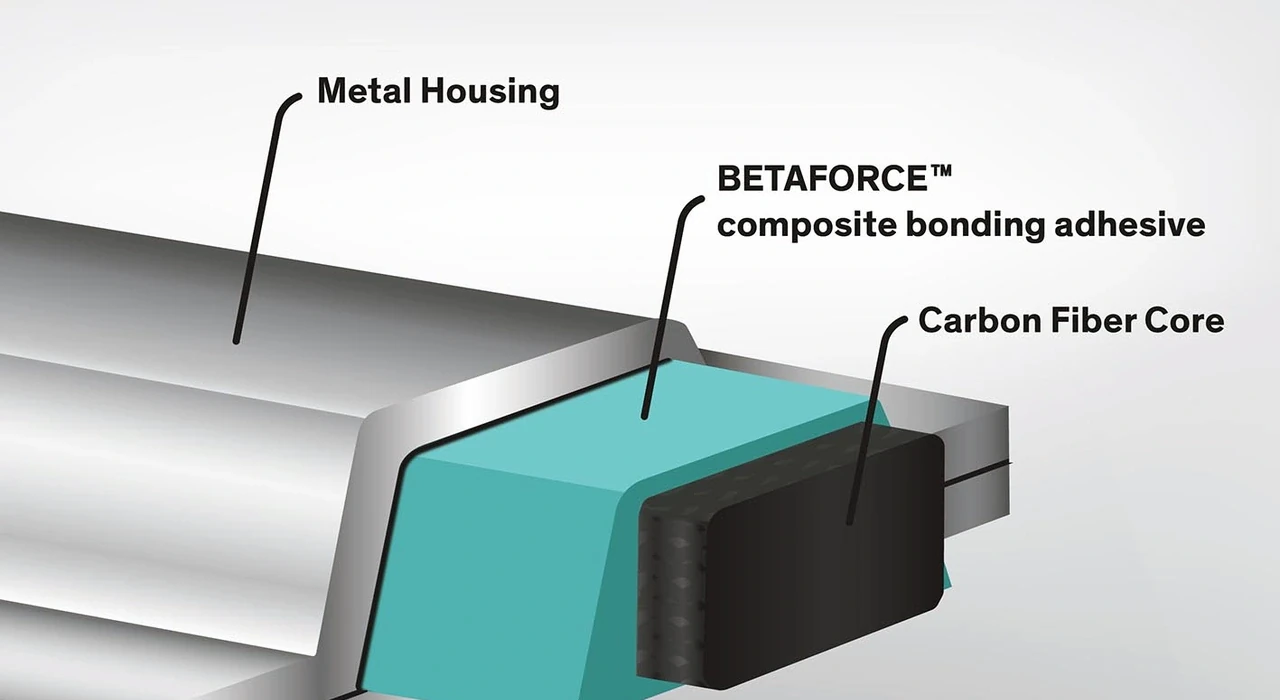In the ever – evolving landscape of materials in China, the plastic – steel composite has emerged as a revolutionary material, captivating industries with its unique blend of properties. This blog aims to provide an in – depth exploration of plastic – steel composite, from its fundamental characteristics to its diverse applications and the potential of CNC machining. By the end of this read, you’ll have a thorough understanding of why this material is making waves in various sectors.
Plastic – Steel Composite: A Technical Overview
Definition and Composition
Plastic – steel composite is a hybrid material that combines the best of two worlds: plastics, typically polyvinyl chloride (PVC), and steel reinforcements. The PVC component forms the matrix, endowing the material with excellent corrosion resistance, electrical insulation, and high plasticity. The steel, usually in the form of a steel lining, acts as a structural backbone, significantly enhancing the material’s strength and rigidity. This synergistic combination overcomes the limitations of either material used alone.
Development History
The development of plastic – steel composite was a result of the continuous pursuit of improved material performance. In the early days, plastics were recognized for their numerous advantages but were hampered by their lack of strength in certain applications. Similarly, steel faced challenges such as corrosion. As materials science advanced, researchers experimented with combining these two materials. Through extensive trials and refinements, the plastic – steel composite was born. Starting from niche industrial applications, it has now become a staple in industries ranging from construction to automotive.
Exceptional Corrosion Resistance
The outer PVC layer of the plastic – steel composite provides outstanding resistance to acids, alkalis, and other chemical substances. Whether exposed to the humid climates of southern China or industrial – polluted areas, the material remains stable over long periods, resisting corrosion effectively. This property makes it an ideal choice for outdoor facilities, chemical plants, and coastal constructions.
Superior Thermal Insulation and Heat Preservation
Plastics are natural poor conductors of heat, and the structure of the plastic – steel composite further enhances this insulating property. In the context of building applications, for example, plastic – steel windows and doors are far more effective at preventing heat transfer between the indoors and outdoors compared to traditional aluminum counterparts. This not only improves indoor comfort but also contributes significantly to building energy efficiency by reducing the reliance on air – conditioning and heating systems.
High Strength and Rigidity
The embedded steel lining imparts substantial strength and rigidity to the plastic – steel composite. In construction structures, plastic – steel profiles can serve as load – bearing components, meeting strict mechanical performance requirements. The material’s rigidity ensures that it does not deform easily under normal use, maintaining the structural integrity of the application.
Aesthetic Appeal and Easy Processability
Plastic – steel composite can be manufactured into a wide variety of colors and surface finishes through different production techniques, catering to diverse design preferences. Moreover, it is highly malleable, allowing for easy cutting, welding, and shaping. This ease of processing enables the efficient production of complex – shaped products.
Ideal Project Scenarios for Plastic – Steel Composite
Construction Industry
Door and Window Systems
Plastic – steel doors and windows have become a popular choice in modern construction due to their excellent thermal insulation, soundproofing, and air – tightness properties. In residential, commercial, and public buildings alike, they effectively block out external noise and dust while regulating indoor temperatures. Their wide range of colors and styles can complement any architectural style, enhancing the overall aesthetic of the building. Additionally, the low – maintenance nature of plastic – steel doors and windows reduces long – term costs associated with upkeep.
Exterior Wall Decoration
Plastic – steel wall panels offer a lightweight, easy – to – install, and weather – resistant solution for exterior wall decoration. They can mimic the appearance of various materials such as stone and wood, adding a unique visual appeal to buildings. The panels are highly durable, resistant to fading, and require minimal maintenance, making them a cost – effective option for long – term building facades.
Building Shading Devices
Plastic – steel shading products, including sunshades and blinds, play a crucial role in controlling indoor light and temperature. They can be adjusted according to the position and angle of the sun, effectively blocking direct sunlight and reducing heat gain. These shading devices are not only functional but also contribute to the overall energy efficiency of the building.
Automotive Industry
Automotive Interior Components
The plasticity and aesthetic appeal of plastic – steel composite make it a preferred material for manufacturing automotive interior components such as dashboards, door trims, and seat frames. It can meet the diverse design requirements of modern automotive interiors while providing the necessary strength and comfort. The relatively low weight of plastic – steel components also helps to reduce the overall weight of the vehicle, improving fuel efficiency.
Automotive Exterior Components
Some automotive exterior components, like bumpers and spoilers, are increasingly being made from plastic – steel composite. These components offer good impact resistance, protecting the vehicle body to a certain extent. Moreover, they can be surface – treated to match the body color perfectly, enhancing the vehicle’s exterior appearance.
Industrial and Agricultural Sectors
Industrial Equipment Enclosures
In industrial settings, many pieces of equipment require protective enclosures to safeguard internal components from harsh environmental conditions. The corrosion resistance and electrical insulation properties of plastic – steel composite make it an excellent choice for this purpose. For instance, enclosures for electronic equipment and protective covers for chemical processing equipment can be fabricated from plastic – steel composite, ensuring reliable operation in challenging industrial environments.
Agricultural Greenhouse Frames
Agricultural greenhouses demand materials that can withstand wind, snow loads, and the corrosive effects of the agricultural environment. Plastic – steel profiles meet these requirements, offering sufficient strength while being resistant to moisture, acids, and alkalis. Their thermal insulation properties also help maintain a stable temperature inside the greenhouse, creating an optimal environment for crop growth.
Plastic – Steel Composite and CNC Machining
Principles and Advantages of CNC Machining
CNC (Computer Numerical Control) machining is an advanced manufacturing technology that controls the movement of machine tools through digital programs. When it comes to machining plastic – steel composite, CNC machining offers several distinct advantages. Firstly, it enables high – precision processing, capable of meeting the strict dimensional accuracy requirements of plastic – steel products. Whether it’s complex curved surfaces or minute details, CNC machining can replicate the design specifications precisely. Secondly, the high degree of automation in CNC machining allows for continuous and efficient production, significantly increasing productivity and reducing labor costs. Additionally, by simply adjusting the machining program, CNC machining can quickly adapt to different plastic – steel product designs, facilitating mass – customization.
Feasibility Analysis of CNC Machining for Plastic – Steel Composite
Considering the material properties of plastic – steel composite, it is indeed suitable for CNC machining. Although the steel lining within the composite increases the machining difficulty, with the right choice of cutting tools and machining parameters, the process can be carried out smoothly. For example, when cutting plastic – steel composite, carbide – tipped tools are recommended. By selecting appropriate cutting speeds and feed rates, not only can the cutting quality be ensured, but also the tool life can be extended. In processes such as milling and drilling, it is essential to optimize the machining process according to the characteristics of the plastic – steel composite to guarantee machining accuracy and surface finish.
Application Cases of CNC Machining in Plastic – Steel Products
Custom – Made Architectural Decorative Parts
In high – end construction projects, to achieve unique architectural styles, custom – made plastic – steel decorative parts with complex shapes are often required. CNC machining can accurately transform the designer’s concepts into physical products. Examples include elaborately carved plastic – steel window and door frames and uniquely shaped architectural decorative moldings. These custom parts not only enhance the artistic value of the building but also demonstrate the power of CNC machining in plastic – steel applications.
Automotive Component Manufacturing
In the automotive industry, CNC machining is widely used in the production of plastic – steel components. Take the automotive seat frame as an example. CNC machining can precisely manufacture seat frames that conform to ergonomic principles, improving seat comfort and safety. For automotive interior components with special shapes and functional requirements, CNC machining can quickly respond to design changes, enabling efficient production.
Conclusion
The plastic – steel composite, as a high – performance hybrid material, has demonstrated remarkable potential in a wide range of industries, including construction, automotive, and industrial and agricultural applications. Its unique combination of properties makes it a versatile solution for diverse project requirements. Moreover, CNC machining serves as a powerful enabler, allowing for the production of high – quality, complex plastic – steel products with precision and efficiency. As materials science and machining technologies continue to advance, the plastic – steel composite is expected to play an even more significant role in the future. Whether it’s in energy – efficient buildings or innovative automotive designs, the plastic – steel composite is set to be a key material choice, bringing more convenience and innovation to our lives and industries.

